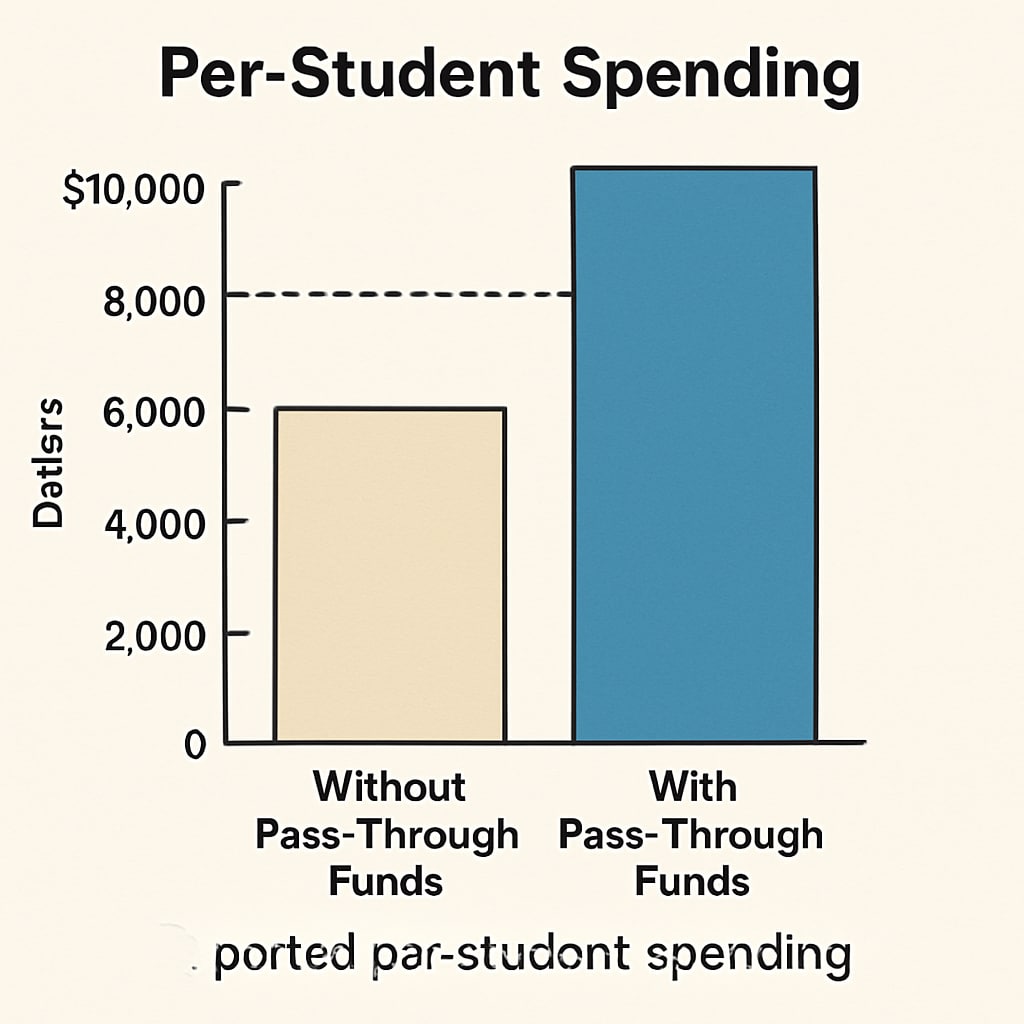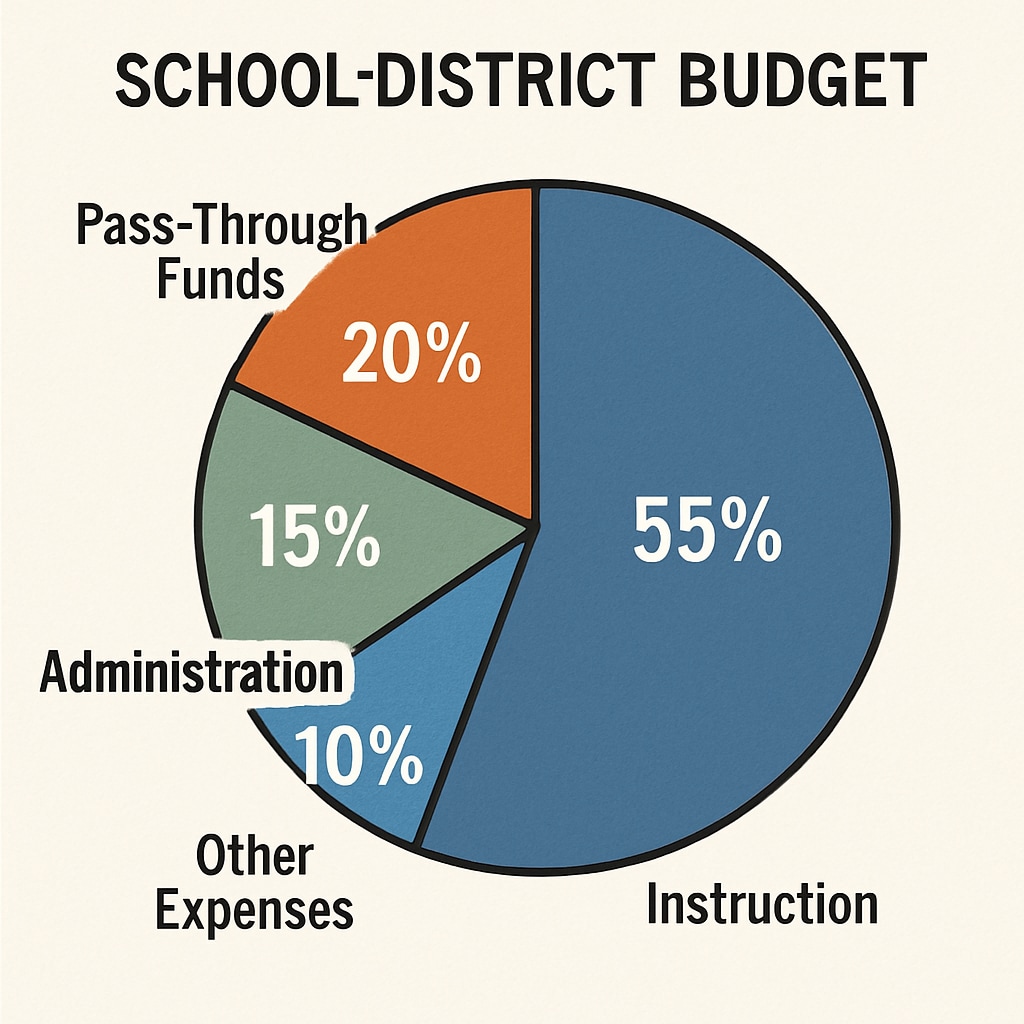When discussing school budgets, the concept of pass-through funds often goes unnoticed. These funds, which are allocated to schools but quickly redirected to other entities or services, can significantly distort per-student spending statistics. This distortion not only creates confusion about actual education investments but also raises concerns about equity and transparency in resource allocation.
In this article, we will dissect the concept of pass-through funds, explore their impact on per-student spending calculations, and propose strategies for more transparent fiscal reporting to ensure fair distribution of educational resources.
What Are Pass-Through Funds and How Do They Work?
Pass-through funds are financial allocations provided to schools or districts that are not retained for direct use but instead “pass through” to other entities or purposes. Examples include federal grants earmarked for specific programs, state-level funds for transportation, or payments to charter schools. While these funds are technically included in a school’s budget, they do not directly contribute to the resources available for student instruction or support.
For instance, a district may receive a large sum of money for a federally mandated program, but most of it is funneled to external service providers. This creates the illusion of higher financial investment per student, even though the actual spending on classroom instruction remains unchanged.
How Pass-Through Funds Skew Per-Student Spending Statistics
Per-student spending is a standard metric used to evaluate a school’s financial commitment to education. However, including pass-through funds in these calculations can lead to misleading conclusions. Here are some ways this occurs:
- Inflated Figures: The inclusion of pass-through funds artificially increases the reported per-student spending, giving the impression of substantial investment in education.
- Uneven Comparisons: Schools or districts with high pass-through funds may appear to outspend others, even if their direct spending on students is lower.
- Resource Misallocation: Policymakers and the public may misjudge resource needs based on skewed data, leading to inequitable funding decisions.
As a result, stakeholders—including parents, educators, and policymakers—may struggle to understand the true financial picture of a school or district.

The Need for Transparent School Budget Reporting
To address the distortions caused by pass-through funds, it is crucial to adopt transparent accounting practices. Separating pass-through funds from direct spending in budget reports can provide a clearer picture of actual investments in education. Transparency is essential for several reasons:
- Accountability: Clear reporting ensures that funds are being used as intended and helps stakeholders hold schools and districts accountable.
- Equity: Transparent data allows for fair comparisons between schools and districts, ensuring that resources are distributed based on genuine need.
- Informed Decision-Making: Policymakers can make better funding decisions when they have accurate information about where and how money is being spent.
Several educational organizations and financial watchdogs have called for the adoption of standardized reporting frameworks that distinguish between pass-through funds and direct expenditures. This practice would align with broader efforts to improve fiscal transparency in public institutions.

Conclusion: Rethinking Per-Student Spending Metrics
The impact of pass-through funds on per-student spending statistics cannot be ignored. While these funds serve important purposes, their inclusion in overall spending figures can mislead stakeholders and hinder efforts to achieve equitable resource distribution in education. By adopting transparent reporting practices and rethinking how we calculate per-student spending, we can ensure that school budgets better reflect the realities of educational investment.
Ultimately, understanding and addressing the distortions caused by pass-through funds is a critical step toward building a more equitable and effective K12 education system. Educators, policymakers, and communities must work together to demand greater transparency and accountability in school budget reporting.
Readability guidance: This article uses short paragraphs, clear transitions, and accessible language to ensure readability. Lists and visual aids like graphs and charts are suggested to summarize key points effectively.


